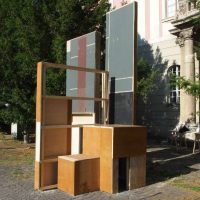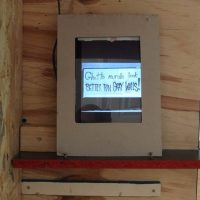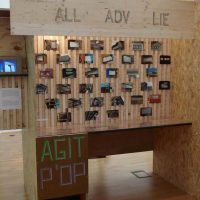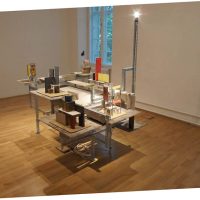Tamás Kaszás’s art centres on ecological, economic and social issues. Dominating his approach are the concepts of autonomous individual and community, collaborative solutions, re-coordination of experience and knowledge, marginal viewpoints, and sustainability. The thematic groups which clearly emerge from his art works and installations may be interpreted as constituting an alternative model of society, a confrontation with the global order and all kinds of oppression. At this exhibition, the artist himself questions the reality and validity of these strategies, perhaps hoping that the endeavours of today will not share the fate of the utopias.
To map out the ideals of society, Kaszás focuses on the advertisements and kiosks designed by avant garde artists to propagate the ideals of modernity. The international exhibitions and industrial trade fairs which showed off the innovations of science and culture in the 1920s demanded new forms of presentation and new advertising media. Avant garde artists and architects were actively involved in designing these ephemeral architectural constructions and advertising kiosks. For them, the advertisement and the kiosk were more than just the heralds of the modern advances and new principles of quality. They saw them as having a society-forming role, providing broad public access to the new ideals. The boundaries between advertising media and the “demonstrators” of artistic programmes began to dissolve, as is conveyed by this show of Tamás Kaszás’ work together with artworks belonging to the Kassák Museum.
Tamás Kaszás’s work is the realisation of old utopian designs as abandoned, debased, defunctionalised ruins. The unfulfilled, worn out and debased remnants of modernity’s programme have taken a place in contemporary culture stripped of their utopian charge. They are the raw material for Kaszás’s art, and furnish his proposed models of society with realism and potential feasibility. As Lajos Kassák put it when setting out his theory of advertising in The Book of Cleanliness, it is only when we jump that we find that “the trench is not in fact as deep as the engineer calculated”.



